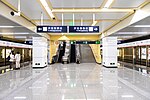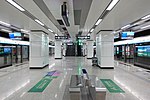Capital Medical University
1960 establishments in ChinaCapital Medical UniversityEducational institutions established in 1960Medical schools in ChinaSchools in Fengtai District ... and 1 more
Universities and colleges in Beijing
Capital Medical University (CMU) (Chinese: 首都医科大学) is a public research university in Beijing, China. Capital Medical University was founded in 1960, with the original name of Beijing Second Medical College.
Excerpt from the Wikipedia article Capital Medical University (License: CC BY-SA 3.0, Authors).Capital Medical University
Fengtai District Youanmen (You'anmen)
Geographical coordinates (GPS) Address Nearby Places Show on map
Geographical coordinates (GPS)
| Latitude | Longitude |
|---|---|
| N 39.8647046 ° | E 116.353359 ° |
Address
100069 Fengtai District, Youanmen (You'anmen, 玉林小区)
Beijing, China
Open on Google Maps











